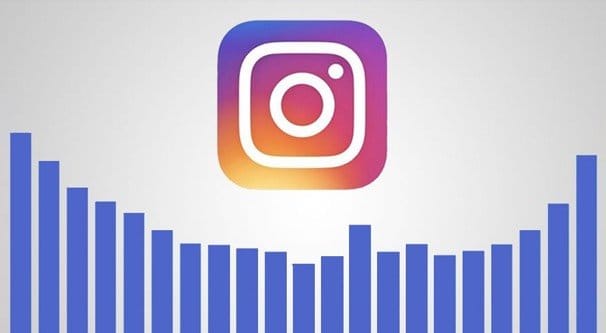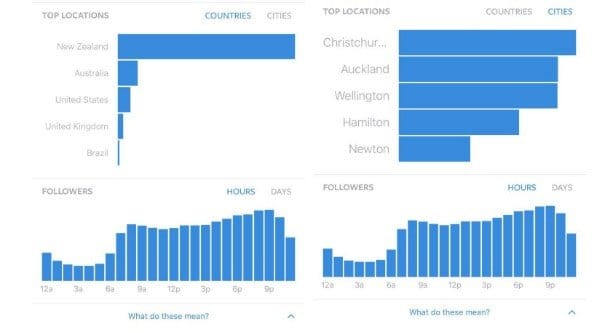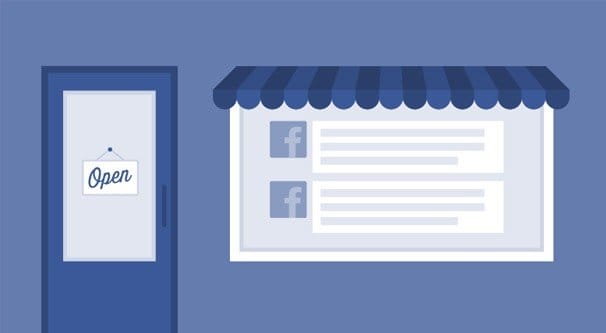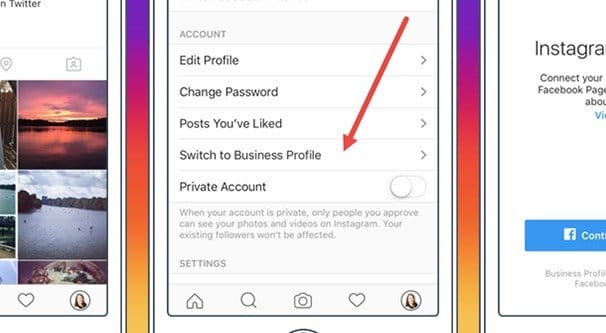 Written by ContentPowered.com
Written by ContentPowered.com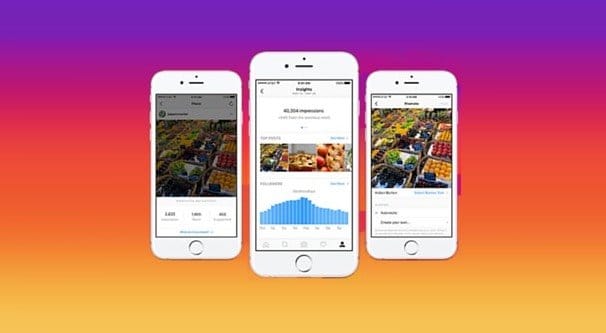
A lot of brands have taken to using Instagram for business, but surprisingly often I encounter a brand using personal profiles rather than business profiles to do the job. How many of you are guilty of doing exactly that? If you are, you’re hampering yourself and you’re missing out on a lot of fancy features that make business life easier.
It should be noted here that I’m being a little aggressive with that intro under the assumption that everyone has the ability to switch to Instagram Business. The reality is that, as of the time of this writing, it’s actually a limited feature Instagram/Facebook is testing. It’s not available to everyone, so don’t feel bad if you can’t actually make the switch. Just check back every few days and see if the feature has rolled out to your profile yet.
The Benefits of Instagram Business
Why should you switch to Instagram Business, rather than simply continuing to use a normal personal profile on Instagram?
Well, the first reason is pretty obvious if you’ve followed marketing on Facebook at all thus far. Facebook doesn’t like when marketers use personal profiles for business, and since they own and run Instagram, you can bet there will be pressure to convert from a personal to a business page soon there as well. It will be pressure from both sides; positive pressure in terms of the additional features you get, and negative pressure in terms of the penalties for not switching.
Switching to an Instagram business profile gets you access to Instagram Insights. If you’re a Facebook marketing veteran – you’ll hear that a lot – you likely know how valuable Facebook Insights can be. Instagram Insights are a little more limited than what Facebook provides, but they are still valuable. You get:
- The ability to see the number of impressions a post has received.
- The ability to see the total reach of a post, that is, the number of unique accounts that saw your post.
- The ability to see the number of accounts that have tapped through to your website via the link in your business profile.
- The ability to see the average follower activity for your audience, showing you how many times during a typical day your audience is generally online.
- The ability to see demographic information about your audience, including gender distribution, age ranges, and location information.
- The ability to see the impressions, reach, and engagement statistics for individual posts. In this case, engagement means the number of unique accounts that engaged with a post, not necessarily the pure number of engagement actions taken.
Again, it’s not as robust as what Facebook includes, but it’s still a relatively new feature in limited testing. You can bet that Instagram will be expanding the data they provide in the coming years.
You also gain additional informational sections in your profile. You can include business information there, including your physical address, phone number, email address, and website link. When you have contact information filled in – and you’re required to have at least one method of contact saved – you gain a “contact” button on your profile. Tapping that button in the Instagram app will give the user a drop-down with each method of contact you have available, including Get Directions, Call, and Email. This additional form of call to action helps people recognize you as someone more than a content creator, and as someone they may want to engage with on a commercial level.
You can bet that Instagram will be testing and rolling out more features for Instagram business users in the future as well. Right now they’re still testing the business format at all, which is why it isn’t available for everyone. In the future, there will be more for you to take advantage of while you run a business on Instagram. For example, I anticipate a more Instagram-focused section of the ads program, since right now you need to use Facebook’s ads system to make Instagram ads. I might also anticipate a business-focused stand-alone app to go with Instagram, or even its own section in the business manager. This is just spitballing ideas, of course; I have no way of knowing what specifically the future holds.
What You Need
So what do you need in order to convert from a regular Instagram profile to an Instagram business profile?
First, you need an active Instagram profile. While you could just make a new profile and perform the same steps, you won’t get as much out of it because you don’t already use it for business and you don’t already have an audience. A lot of the best features of an Instagram business profile are in the analytics access you get, so you don’t benefit as much if you don’t already use Instagram for business. That said, any new adopter looking to run a business with Instagram should convert to Instagram business at the first opportunity, just to have it ready and to start recording historical data.
Second, you need a Facebook business page. This means you need a Facebook personal profile that is set to be the admin of that Facebook business page, because you need to authorize a link between the Facebook and the Instagram pages. If you don’t have a Facebook page for your business, well, first of all, what are you doing here? You should be reading other articles about setting that up and getting it growing first. If you have a Facebook business page, but you’re not the one in admin control of it, you will need to be made co-admin or you will need to hand over the credentials of your Instagram account to the admin of the Facebook page, so that they can make the link between the two. That first option is probably better; they can always remove you as admin later, so long as you don’t try anything sly and try to remove them first. That sort of corporate espionage is frowned upon.
You also need the ability to actually link the profiles and set up an Instagram business account. This one is simple enough; just try to follow the steps below. If you can’t do it, you don’t have the feature yet. Give it a few days and try again. Eventually, Instagram will roll out the feature to everyone.
Three Steps to Converting an Instagram Profile to a Business Profile
The first step here is really a conglomeration of setup steps, so strap in, friends, we’re going for a ride.
The first thing you need to do is actually have Instagram on a device you can use to access it. You can’t make this conversion via the web interface at the moment, and you may or may not be able to do it if you’re using some kind of mobile emulator like BlueStacks. You will have to go to your Instagram app and go to your profile, which will bring up your profile information and your description. Up at the top is a gear icon; this is your options menu. Tap that to open it up and look at the options.
Now, if you have the option to convert to a business profile, it will be there. It will be obvious, too; a big entry labeled “switch to business profile.” If it’s there, tap it. If it’s not, that’s it, you’re done. You don’t have the option available. You’ll have to check back later and wait until Instagram rolls out the feature to whatever set of accounts you’re in. It’s a mystery how they choose who gets it and who doesn’t, so there’s no way of knowing when you’ll get it, or if you even will before broad-spectrum rollouts happen.
Step two is simple enough. Once you’ve tapped the “switch to business profile” button, you will be brought to a “connect your Facebook page” screen. On this screen, you will be asked to log in to Facebook, if you don’t already have Facebook authorized on your device through the app or if you don’t have your accounts linked already. If you already use Facebook ads to manage Instagram advertising, you’re probably already linked, and will simply have to confirm some information.
If you haven’t linked your accounts before, when you log in to Facebook, you will be presented with a list of the business pages you’re the admin of. If you only have one page, it’s simple to pick the right one. If you have more than one, make sure you’re picking the page appropriate for your business. You don’t want to accidentally link two different businesses with each other, after all. I’m not sure if Instagram currently has a way to remove the link or not, but I wouldn’t want to be in a position where I have to find out, either.
Also, do note that an Instagram business profile can only be linked to a single Facebook page at this time. That means if you’re a business with multiple franchise pages, you need to pick the right one for your Instagram business. You will either need to make Instagram pages for each of your individual franchises, where you will link each one to their relevant franchise, or you will need to have one central page with franchises as sub-pages. Think of it like having a sole corporate office you send all of your high-end business interactions to; that’s what you’re doing with this link.
So, make sure you pick the right Facebook page, and tap to create the link between Facebook and Instagram.
This brings you to step three, where you have to set up your business profile on Instagram. It will pull data from Facebook to fill in profile fields if you have that information on Facebook. If not, you will need to review and add it to Instagram. This information is limited to the contact information for your business, so there’s not a lot to add, and you won’t have to painstakingly type in a lengthy profile using a phone keyboard.
- Email is probably your most important point of contact. It’s something everyone can use to contact you regardless of their situation and should be ever-present. It’s up to you whether you want this to be your standard email, a sales email address, or a customer service point of contact. Think about which form of contact is most likely to come through Instagram and go with that one. You can always change it later.
- Phone number is surprisingly valuable. While on the one hand, the demographics using Instagram are some of the least likely to make a phone call to you, they’re also already on a mobile app. If they have a question or want to ask about store hours, product availability, or something similar, they can do it via phone very easily. After all, they already have the phone in their hands.
- Address is valuable for helping people find their way to your physical location, but it’s of limited utility. For one thing, if your business is primarily online, you won’t get much out of providing an address, other than people wondering why this address is pointing to a house. For another thing, both Facebook and Instagram tend to be focused on broad-ranging audiences, geographically. Providing an address can help local users find you, but people further away won’t be able to take advantage of it.
Nevertheless, you should have as many of them as you can reasonably use. If your business is entirely online, you won’t be able to use a physical address and take advantage of it. Phone number likewise only works if you’re actively using the phone number for your business; if it’s just a personal number, don’t put it up.
Once you’ve reviewed the information for accuracy and said that it’s correct, simply tap done. That’s it! Now you have the new profile fields, the new call to action, and access to Instagram Insights. Use them how you will.
